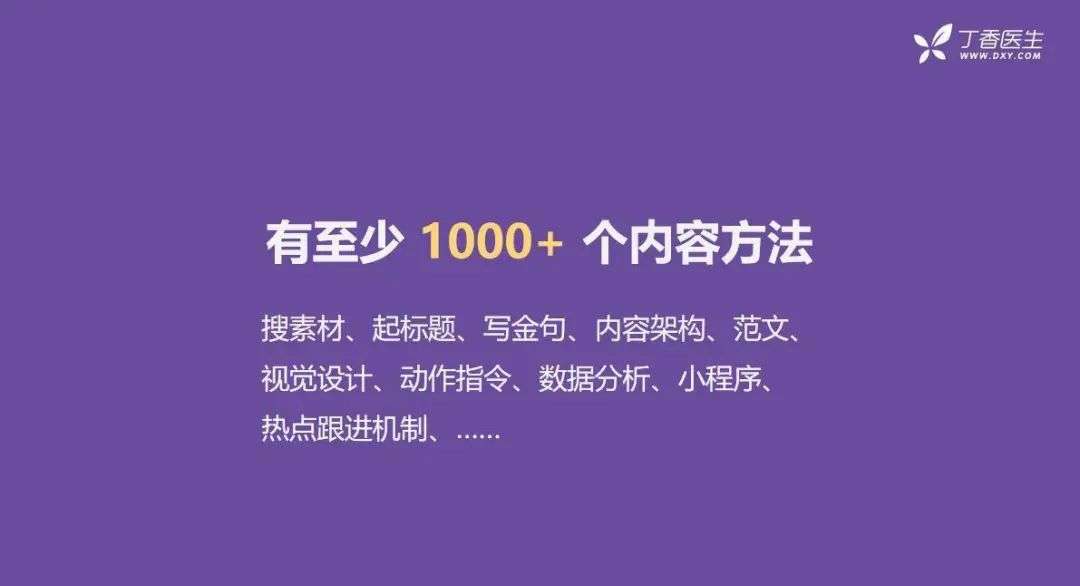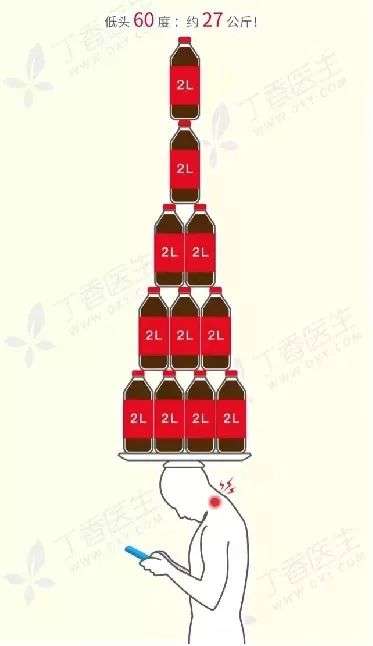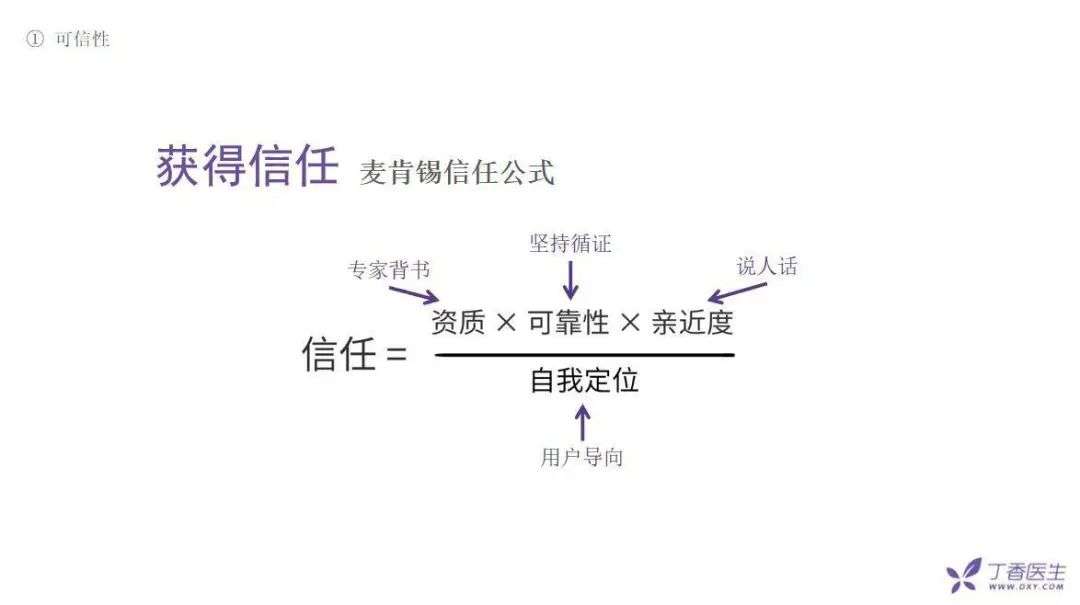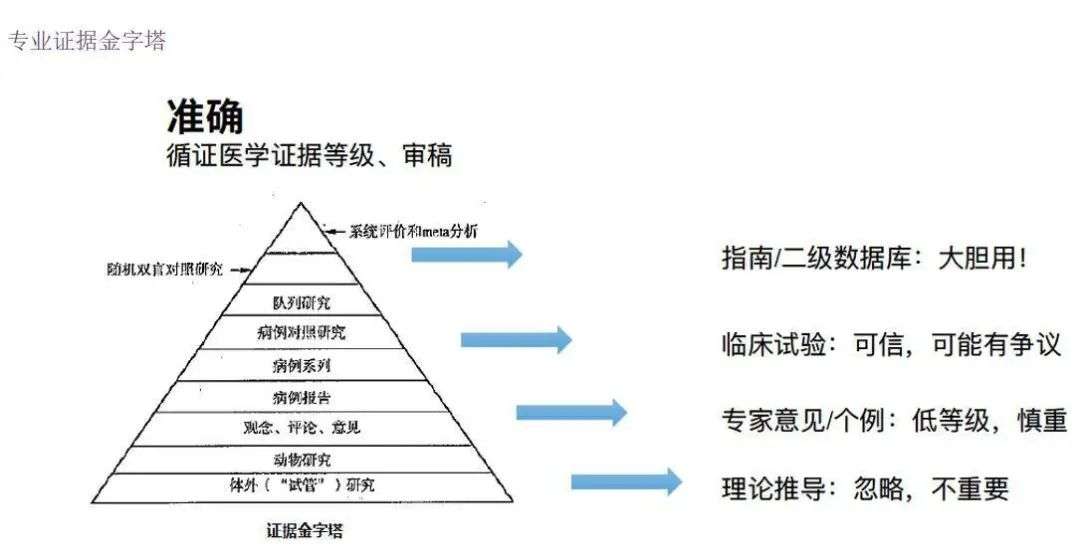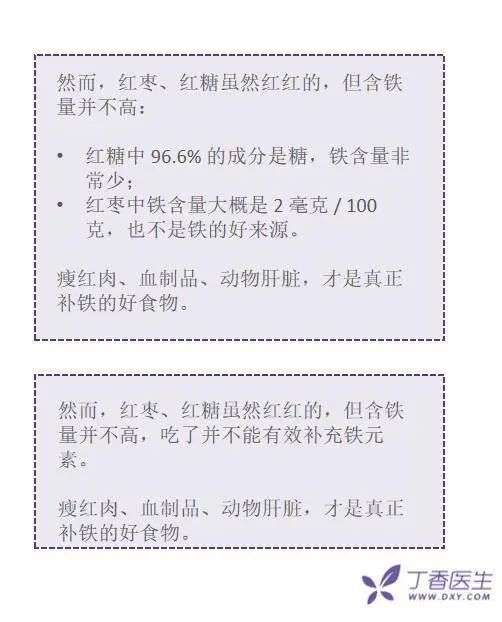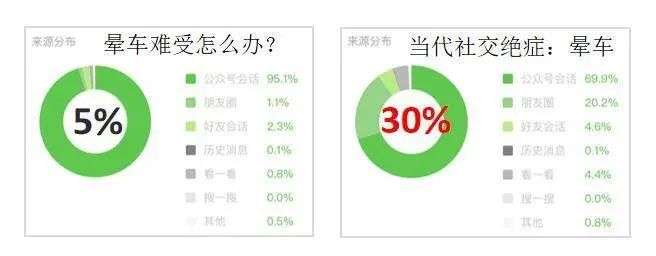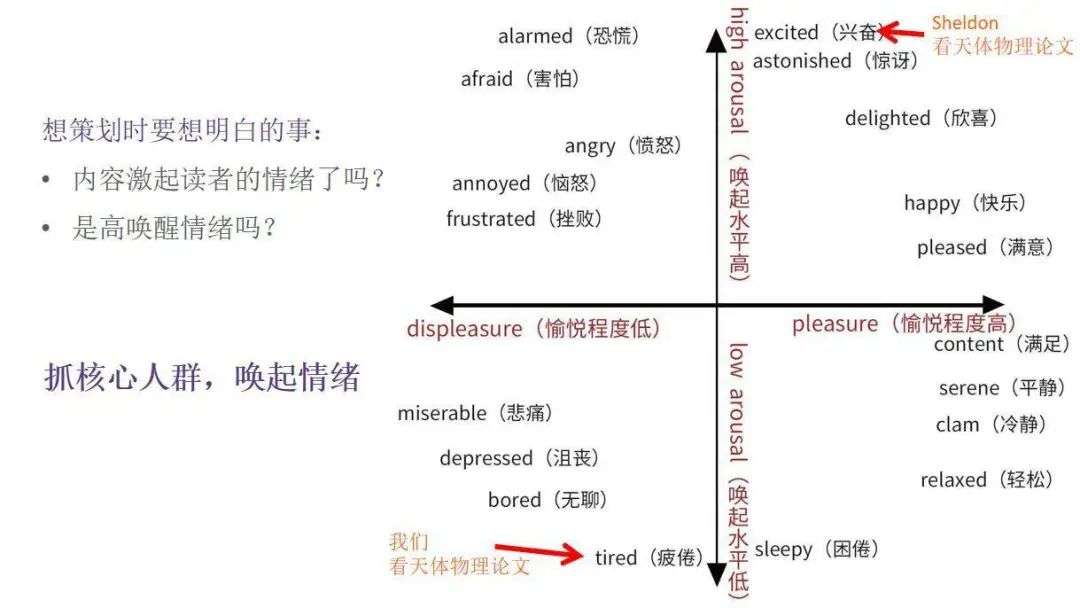2 Keys and 1 Method to Create Hot Content (ID: mantousxy) , author: Dong Yang, editor: Junjie, MS, text titled “50 million fans of the whole network, the content explosion models methodology which can be copied doctor cloves have? “.
It is understood that the total number of fans of Dr. Dingxiang’s new media matrix has exceeded 50 million.
Among them, WeChat public account fans have exceeded 15 million, occupying WeChat public accounts all the year round.Health List No. 1 ; In Zhihu, the total number of fans of Dr. Dingxiang ranks No. 1, and has reached 2.927 million so far; he has been in Douyin for more than two years and has accumulated 901.8w fans; Weibo fans have reached 523w, and are also frequently listed on Weibo hot search…
In addition to blooming everywhere on new media platforms, whenever a major event occurs in the health field, Dr. Lilac always speaks for the first time, breaking down misunderstandings for the public and revealing the truth.
For example, the Changchun Changsheng Vaccine Incident in July 2018, Dr. Dingxiang’s article “7 Answers Everyone Should Know After the Changchun Changsheng Vaccine Incident”, has been read up to 1,100w+ and shared 100w+ times; March 2018 , When the rumors that Starbucks caused cancer spread, LilacThe doctor also published articles to refute rumors immediately…
From time to time, there are popular content that spreads across the Internet. So how does Dr. Dingxiang continue to produce popular content?
In Mantou Business School launched the “7 Mainstream Platform Global Traffic Marketing Strategy” live broadcast At the summit, we invited Mr. Dong Yang, the person in charge of Dr. Dingxiang’s new media, to share with you the two keys and one method of Dr. Dingxiang’s explosion logic, hoping to inspire everyone.
Breakout logic 2 keys
For creating explosive content, Dr. Dingxiang has an internal content production manual. These are the experiences and lessons summarized in the previous content. The content production manual includes a lot of content, such as how to collect materials, how to create a title, the presentation form of the cover image, and so on.
Here, we mainly talk about the core logic of making explosive models. First of all, we need to know this sentence, that is: not every topic can be made into a hot topic, but every topic choice must be made with hot topic logic.
So, what is the logic of the explosion?
1. Sharing genes
Dr. Dingxiang internally believes that there are two key points. The first is to share genes.
Sharing is essentially a social activity, so the content being shared can be used as a user’s social currency. But why are users willing to share your content? This requires your content to reflect a sense of value.
Dr. Dingxiang’s approach is to disassemble the path for users to share actions when doing content planning, find the environment for user expression, or express it for the user.
For example, the topic and content that we publish can help users shape their personal image, or can be used when some important events happen.Talk about his participation in the discussion, so that he will take the initiative to share our content.
So, in terms of sharing genes, what Dr. Dingxiang has to do is to help users find a reason for sharing, and maximize this reason, so that he “must transfer”.
2, User Orientation
The second key is user orientation.
In terms of user orientation, Dr. Ding Xiang insists on two “not to do”: not doing desktop science popularization and not doing textbook popular science.
Don’t talk about desktop science, and ask us to start from data to gain insight into user needs.
Traditional media has a big disadvantage in that it can only communicate unilaterally, such as television newspapers, etc. After it is sent out, the user is in a passive position, he can’t watch it, and the data is difficult to track.
But for new media, users have the right to decide whether to open or not. Through the data background of the official account, we can clearly see whether they like or disinterest an article, and know their pain points.
After meeting the needs of users, it is also very important to provide users with incremental information.
To give an example, we often talk about refuting rumors, but at this stage, Dr. Dingxiang has done this less often. This is because many rumors about health have become common sense after we repeatedly emphasized them around 17 years ago. , This is not information increment for readers.
When you spread common sense, users will feel worthless, so we must constantly look for new information increments to match the different needs of users at different stages.
Don’t do textbook-style science popularization, but simply “speak the people”.
On the first day of account establishment, Dr. Ding Xiang repeatedly asked such a question internally: Is there any “speaking of people” in your topic? Our goal is to “translate” the most professional content into a level that can be understood even if it is at a junior high school level, and not only to be able to understand it, but also to find it interesting.
In Dr. Dingxiang’s view, following the traditional structure of “what-why-how” popular science content is actually lazy.
Because this kind of content is no different from a textbook, that is, if you open any book, you will see similar structures and similar forms of content, and its sense of value will be greatly reduced.
It’s like, when you lower your head to play with the harm of mobile phones in popular science, tell the readers that lowering your head to play with mobile phones will increase the pressure on the cervical spine, harm the health of the cervical spine, and cause neck pain…
When the reader sees such content, the only thing he may perceive is that the neck will hurt, but words such as spine pressure and injury to the health of the cervical spine are actually relatively abstract and difficult for users to perceive.
How did Doctor Lixiang do it?
We shallThrough the transformation of some data, I made a calculation about the pressure of the cervical spine, and finally found that when we lower our heads 60 degrees, the cervical spine will bear about 27 kg of pressure!
In order to show more intuitively, we also made the above picture, lowering the head 60 degrees, which is equivalent to putting 11 bottles of 2L Coke on the head. After the user saw it, it was very easy to perceive that when I was playing with a mobile phone, my neck was under such great pressure.
Later, the visually intuitive pictures became a feature of Dr. Dingxiang’s content, instead of simply telling readers that doing so may be harmful to health.
In terms of user orientation, we must also value user feedback.
My colleagues in new media will pay attention to data, including reading volume, sharing volume, opening of extra accounts, retention of fans, etc., but many people do not really use these data.
The working method followed by Dr. Dingxiang is PDCA, namely Plan, Do, Check, Adjust: set goals-execute goals-check data-adjust strategies.
This is the cycle of the production of an article, and it is also the methodology that Dr. Dingxiang has precipitated after countless cycles. You can also use it in actual work when analyzing and summarizing the creation content.
Because the inspiration for writing content is not long-lasting. When the inspiration disappears, we can also accumulate some systematic methods through such a process of continuous inspection and continuous adjustment to continuously produce high-quality content, and even Explosive content.
1 method: sharing mechanism
The above are some concepts. Below we will talk about a more practical method-sharing mechanism.
Although this part will involve Doctor Lilac, its overall methodology is suitable for all media. It’s just that you may need to adapt your account or operating channel a little bit.
In Dr. Dingxiang’s internal terms, the sharing mechanism actually comes from two books-“The Crazy” and “The Rumor.”
After studying these two books, we have concluded a methodological formula: communication = credibility x sense of value.
Why is a multiplication sign used here? Because for the field where Doctor Lilac works, if either credibility or sense of value is 0, spread is 0. You are not credible, there will be no spread, there is no value, and users will not spread.
So this piece, what we have to do isProvide value to users through content. Only when our content has utility value can it influence users to take the next action, that is, the action of propagation.
The premise for users to do this action is trust.
1, credibility
How to improve credibility and gain user trust? You can refer to McKinsey’s trust formula, as shown below:
Simply disassemble the formula in the above picture. For Dr. Lilac:
Qualification is endorsed by experts;
Reliability is our own evidence-based insistence, that is, there is evidence;
Proximity is to speak human words, like friends, to explain knowledge in a closer and gentler way, rather than high-level science knowledge;
Self-positioning is user-oriented. You must be user-oriented. You can’t start from self-oriented. The higher the self-oriented, for the user, his The degree of trust is lower.
1) Actual credibility of key information: professional evidence pyramid
Take Dr. Dingxiang as an example, how do we gain user trust? The most important thing is to achieve the actual credibility of key information.
We have a pyramid of professional evidence, you can take a look:
In the professional evidence pyramid, we have a division of credibility. Many rumors about health are not credible because they are theoretical derivations.
To give a simple example, we often see that a certain ingredient in a certain food can kill cancer cells, so it follows that eating a certain food can kill cancer cells. This This is a simple theoretical derivation.
Because there is no authoritative research evidence that can prove that food itself can kill cancer cells or even cure cancer. Doctor Ding Xiang will not deduce the content from a theoretical level, we will ignore it directly.
A higher level is the opinion of an expert, or an example of an expert. Relatively speaking, experts themselves are authoritative, but the opinions of experts often contain personal background material, cognitive limitations, etc., and there may even be some deviations, or situations that are too cutting-edge. In this case, we Will be handled with care.
The higher level is clinical trials, and there must be clinical trials specifically targeting the population on this topic. However, in medical experiments, some experiment a is useful, and some experiment b is useless. This kind of experiment will also be controversial.
So when we adopt it, we will choose some of its credibility. For example, whether the experiment is reliable, whether the published journal is of high quality, etc.
The highest level is a guide, especially a guide issued by a national or authoritative organization, or high-quality literature research. For example, guidelines issued by a professional association, announcements issued by the National Health Commission, etc., these are relatively authoritative and reliable, and we generally adopt them directly.
For everyone, you have to go and see if there is such accuracy in your major? When you are producing content, is there such a standard internally? This requires you to build according to your own profession.
2) The presentation form of the proof: exploit human intuition weakness
It is not enough to build a pyramid of professional knowledge. We also need to consider the form of proof.
When writing medical articles, you are likely to face a problem, that is, very professional content that users cannot understand at all.
For example, if many people read the English literature, they will feel that there is no conclusion, so how do we present it?
There are three techniques for presenting at this time: testimony, story and lowering the threshold of trust.
Testimony refers to official agency testimony, expert testimony, or display data. It mainly uses the characteristics of the general public who believe in authority.
Stories are equivalent to “user testimonials”. Lowering the threshold of trust is mainly because there are pictures and the truth, using the characteristics of people following the crowd and seeing is believing.
We have used two forms of expert exposure, one with a clear real-life avatar, and the other with a cartoon avatar.
When you see these two forms, you will definitely think that an expert’s real-life avatar is more reliable, because users can intuitively feel that this is a real expert. Although the cartoon avatar is said to be who, users will feel this Is a dummy, This is called seeing is believing.
There are also two explanations in the figure below that red dates and brown sugar cannot supplement iron. Which one might be more reliable for users?
The high probability should be above, why? Because it gives specific real data, it doesn’t matter if you don’t believe me, but objective data is like this. You can compare the data to know which one is more useful.
And the following explanation, it is obvious that I reasoned with you, you should not eat that, it is useless. Users may ask why? Why do you say that it is useless if it is useless?
This very small detail is sometimes the key to determining whether a reader trusts you. And these small details are superimposed together, giving people the feeling that your article is credible or not.
2, sense of value
The second most important point of the sharing mechanism is the sense of value. The sense of value mainly includes practical value and circulation value.
1) Practical value
Practical value means that this information itself has a sufficiently large increment, and we internally call this information key information.
Users know this key information, which can bring benefits, or users do not know this key information, which will cause losses. At this time, we must emphasize the perception of actual value.
-
Practicality
The first is practicality, which can meet the needs. The stronger the pain point, the stronger the sense of value.
For example, they are all potato chips. During the promotion, the main selling points of the three bags of potato chips are cheap, nutritious, and will not gain weight. Which one can better meet the needs of users?
First of all, this will be related to the population, but for ordinary or young consumers, not getting fat may be the most important thing, but nutrition may be the least they care about. I eat potato chips and I still care about nutrition ?
So we must find out the pain points of users and meet their most practical needs. In this place, we also summarized a solution, called extremes, the best effect.
The first one is that the simpler, the easier it is for users, the lower the threshold for realization, the stronger the sense of value.
Many rumors and small life tips that have spread widely are in the direction of easy access, easy realization, and low barriers to entry. Users only need a few cents, or just do a simple action,Being able to cure diseases is relatively practical.
Then the users who saw it felt that sharing it out, or the actual cost is not high, so you might as well give it a try.
If your stuff is particularly complicated and the threshold is very high, for readers, his first reaction may be that I cannot do it. You tell him so much, and he knows that your truth is right, but for him, he can’t do all of them. In fact, he doesn’t have a strong sense of value.
The second is that users can achieve it, but there is a little threshold, and it is a little difficult to implement. Then you can adopt a large and comprehensive strategy, the more comprehensive the more useful, the user may not be able to finish it at the time, but the user feels It is useful.
Because many users are hoarding and hoarding. For example, if you give the user 10 exercise methods to lose weight, the user will collect them, and he will think that I can’t use this thing now, but may use it in the future.
-
Vigilance
The second point of practical value is vigilance. Vigilance is to remind users of any harm. In the foreseeable future for users, the greater the harm, the stronger the sense of value.
For example, “700 million Chinese people will suffer from diabetes”, which many people cannot perceive. Because China has 1.4 billion people, users will feel that they may be another 700 million people, and they may not get me.
But let’s change the expression of this sentence: In China, one in two people will develop diabetes.
In this way, the user’s perception will be very clear. There will be one of two people, either me or the people around me. This is the clear perception.
So although the meaning is the same, in the interpretation, whether there is a direct relationship with the reader is also very important.
So everyone should think about it when making content. The content you want to express may be really serious for users, but can users really perceive this seriousness at the moment?
If you can’t perceive it, you need to use some verbal conversion methods so that users can truly realize that if they don’t pay attention now, they may be harmful to themselves tomorrow.
-
Recreational
The recreational nature of practical value. It is more of a conversational resource and provides a social opportunity.
For example, cold knowledge like entertainment gossip, it may not have a clear, particularly practical value that can solve the problem. Its point is that if I don’t chat with others, my sense of practical value is relatively weak.
But doesn’t it spread if weak? Not really.
The transmission power of each platform is different, like thisKind of entertainment gossip knowledge, in Weibo, douban specific platforms such as Goose Group will have a strong spread power.
So it still depends on your content, what kind of attributes the platform you are hosting on, and you choose from them that may better match the value of your content.
-
Don’t just say Don’t
There is another point, which is not to just say don’t, but to give solutions and alternatives.
Dr. Dingxiang used to say “don’t” for a while, telling users that you don’t do this, don’t do that, it’s useless if you eat this, and it won’t help you cure your illness.
After talking about a bunch, users will actually have a rebellious mentality: You tell me every day that it’s useless to eat, and it’s not good to eat, so what should I do?
So don’t just say what you can’t do, you have to provide solutions and alternatives to users. For the completeness of the article, it can give users a reassurance.
2) Circulation value
After talking about credibility and practical value, we still need to consider a question: Your content is credible + practical at the same time, but can it be spread?
For example, Professor Li Yinhe taught you 300 tricks to deal with the relationship between the sexes. They are credible and practical, but will readers share them? It may be in a small area, but users will definitely not spread it in a large crowd.
So we have to consider clearly, for the user, what does the action he wants to share represent? In fact, it is set by people.
Every one of us hopes that the image we show to the outside world is positive.
What are the positive keywords? Positive, sunny, humorous, patriotic, justice, personality, etc.
When people share information or articles, they potentially hope to get others’ affirmation of themselves, get more praise from family, friends and colleagues, and leave a positive impression.
At this time, the importance of circulation value is reflected, and the most important thing for circulation value is to reflect the user’s personal value and superiority. useUsers can endorse their own image and get benefits through the circulation of content.
-
Express kindness
A common point of circulation value is to express kindness, that is, to express love, sympathy and gratitude to some things or groups.
On certain festivals, Dr. Lilac will speak up or support some disadvantaged groups, but relatively speaking, the opportunity to express goodwill is relatively weak. Because of this matter, the relevance to readers is not so strong.
For example, Dr. Ding Xiang often talks about tobacco-related topics, which is to quit smoking. The sharing rate of such topics is very high, as high as 10%, while our regular graphics and texts are only 5% to 7%.
But everyone can guess how many extra openings can be brought by each share? Very low, only 1.5, comparable to gender topics.
The key point is that many of these tobacco-related topics have the meaning of what I do for you and what I advise you to do, sometimes even with aggressive persuasion.
Readers share with those close to them. The original intention is for the good of the other person, but in the eyes of the recipient, you are Diss him.
This kind of delicate relationship, everyone needs to pay attention to the content.
-
To please others
The second point of circulation value is to please others.
The most typical example is sharing jokes and interesting things, in order to show that the user is actually a very humorous person, but this point has very high requirements for content, why is it high? Because everyone’s laughter is different.
Take the comedy movie “Charlotte Annoyance” as an example. If you go to Douban to read film reviews, you will find that some people think it is funny, some people think it’s normal.
For one thing, it is really difficult to poke everyone’s laughter at the same time. If you are not that good at humor, your content may look a bit awkward to others.
-
There is urgency
Next, I will talk about two more powerful points, the first is urgency. What is the urgency? It is to display the latest news, grasp potential energy, follow hot spots, and reveal a certain truth.
What is behind the spread of this content? When the user is sharing, he can show that he is a well-informed person, that he has channels that others do not know, can obtain value, and can provide valuable content.
Remember not to use outdated content or content that has become classic. As I mentioned earlier, refute rumorsAfter it has been said 100 times, it becomes common sense, and there is no such urgency.
Dr. Dingxiang has an internal saying, called hot spots and 10, and 9 is normal. It depends on luck and whether the point of entry has grasped the core problem. Therefore, it is normal to throw 9 out, as long as 1 out is a good deal.
So everyone, don’t let the hot spot matter. Try to find a way to follow it. As long as it is linked to your field, you must do everything possible to find the right angle. Don’t let it go.
-
Express yourself
There is also self-expression.
Many people are willing to vent their resonance, express their positions, or persuade others in Moments or on a certain social platform. This is essentially an expression of self-values.
Dr. Dingxiang has done one type of content in the past, one is “What should I do if motion sickness is uncomfortable?” “, this is the solution type; there is another kind of fun, which is “Contemporary Social Terminal Illness: Motion Motion”, which talks about the troubles that motion sickness brings to people’s lives.
Although these two articles are on the topic of motion sickness, there is a big difference between sharing and opening an extra account. The reason is that we have done enough self-expression, so we have a stronger conversion mechanism.
Our conclusion is that speaking for the reader is more willing to share than healing the reader, so everyone can think about the self-expression here.
It is important to pay attention not to let the reader express my mistakes or admit my mistakes, and do not let him expose his privacy or shortcomings.
We have summed up a sentence internally: Thousands of mistakes are not the fault of the target user. Just like gaining weight, it’s definitely not because the user is too lazy, but because the food is too delicious.
You can’t let users admit their mistakes. Although the knowledge transferred is the same, the tone and attitude of the transfer must be adjusted.
3, emotions
For the reader, if he finishes reading a content that meets the above requirements, something must be generated-emotion.
If we divide the level of emotional pleasure and arousal, we can divide it into 4 quadrants.
Readers are willing to express, willing to talk to others, it is a high arousal emotion, which has positive and negative directions.
For example, like I am very happy, I know a particularly happy thing, I must tell my relatives and friends. And, I heard a particularly bad news, which is particularly irritating. I must tell everyone and let everyone fight together.
The other is low arousal, which means that the reader is very sad and sad after reading it, and may want to talk to others, or leave a comment in your comment area, but he will not share it.
Or after he finishes reading it, the whole person becomes Buddhist, especially Light clouds He is also unwilling to do the next step of sharing. Perhaps more is to chat with the operator of your account and click like.
So when planning, you have to understand, does our content arouse readers’ emotions? What kind of emotion is aroused? If you want to share, is it a high arousal emotion?
I want to emphasize one more thing in this area, that is, we must grasp the core group to wake up emotions. Because of the same article, for different readers, his awakened emotions are completely different.
For an account operator, you need to be clear who is the core group of people you want to catch in this article. Grasping this group of people to awaken their emotions, this is the most critical. Don’t think that everyone must be taken care of, all emotions must be taken into consideration, there is no need.
Once you operate in this way, your consideration is particularly comprehensive, but it will complicate or even dilute this emotion. Therefore, the key forwarding mechanism of the core target group must be clear not to disperse the target.
